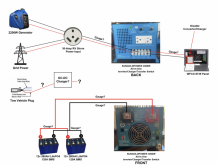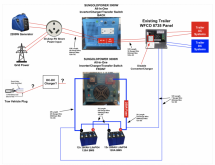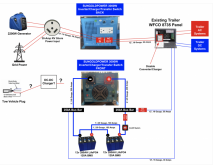Hi all, We have a Jayco X23B Trailer that came with a WFCO 8735 Converter/Panel and a standard 60AH Battery. I recently ordered 8x 280AH Cells to build (2) 12V 280AH LifePo4 Batteries for a 560AH Upgrade. While doing some research, I have found out that our WFCO Converter/Panel will only charge the Lithium Batteries up to only 90%. Also, I'd like to add a 2000-3000W Inverter along w/ the LifePo4 Battery upgrade and possibly add Solar in the Future. I'd like to be able to also use standard AC Shore Power or a Generator to charge the batteries.
It seems the options I have are:
1) Use the existing WFCO 8735 + Add a 2000-3000W Inverter + Transfer Switch
2) Buy an all-in-one Inverter/Charger/Transfer Switch Solution and Use it in tandem w/ the WFCO but disable the Converter/Charger in the WFCO
I'm inclined towards Option # 2... Is this the right approach? Do you have any recommendations for a 2000W+ System? The ones I have looked at so far from AIMS, Victron etc. are in the $1000+ range.
Thanks for your feedback!
It seems the options I have are:
1) Use the existing WFCO 8735 + Add a 2000-3000W Inverter + Transfer Switch
2) Buy an all-in-one Inverter/Charger/Transfer Switch Solution and Use it in tandem w/ the WFCO but disable the Converter/Charger in the WFCO
I'm inclined towards Option # 2... Is this the right approach? Do you have any recommendations for a 2000W+ System? The ones I have looked at so far from AIMS, Victron etc. are in the $1000+ range.
Thanks for your feedback!







